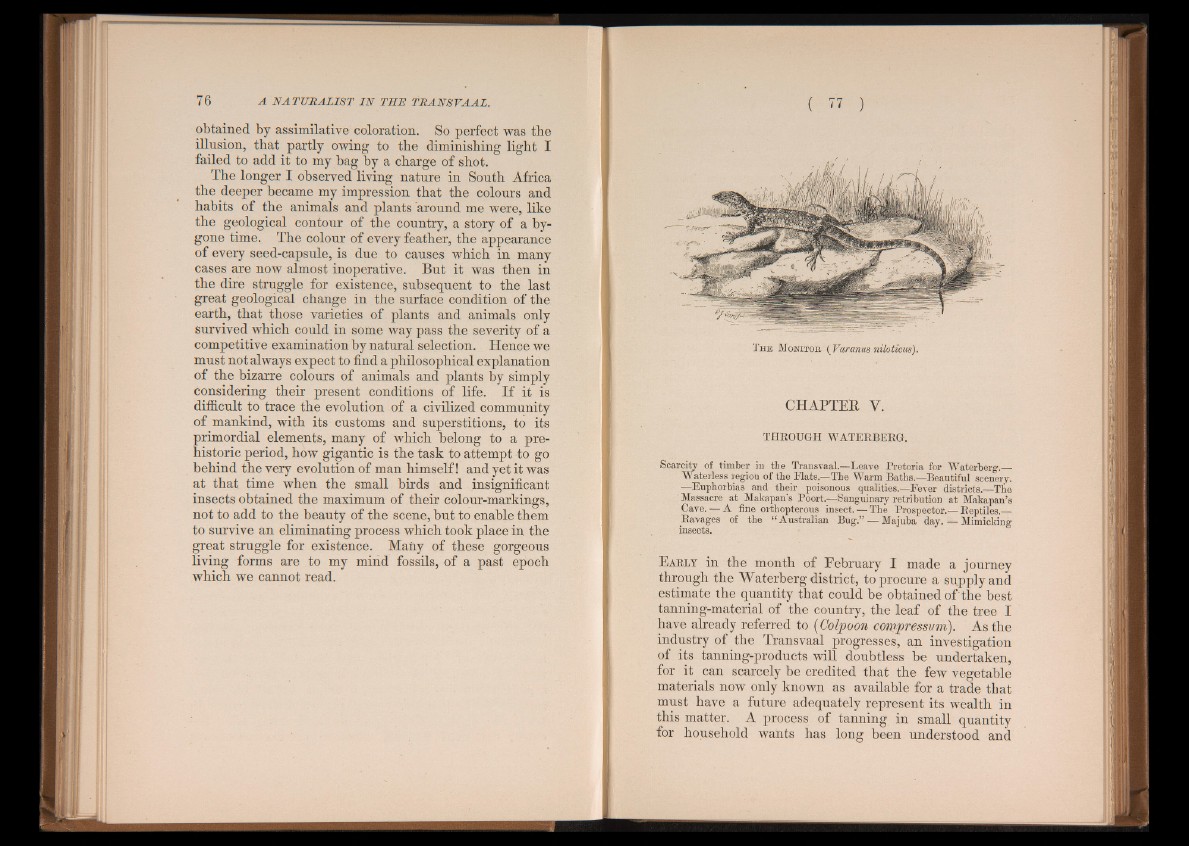
obtained by assimilative coloration. So perfect was the
illusion, that partly owing to the diminishing light I
failed to add it to my bag by a charge of shot.
The longer I observed living nature in South Africa
the deeper became my impression that the colours and
habits of the animals and plants around me were, like
the geological contour of the country, a story of a bygone
time. The colour of every feather, the appearance
of every seed-capsule, is due to causes which in many
cases are now almost inoperative. But it was then in
the dire struggle for existence, subsequent to the last
great geological change in the surface condition of the
earth, that those varieties of plants and animals only
survived which could in some way pass the severity of a
competitive examination by natural selection. Hence we
must not always expect to find a philosophical explanation
of the bizarre colours of animals and plants by simply
Considering their present conditions of life. If it is
difficult to trace the evolution of a civilized community
of mankind, with its customs and superstitions, to its
primordial elements, many of which belong to a prehistoric
period, how gigantic is the task to attempt to go
behind the very evolution of man himself! and yet it was
at that time when the small birds and insignificant
insects obtained the maximum of their colour-markings,
not to add to the beauty of the scene, but to enable them
to survive an eliminating process which took place in the
great struggle for existence. Many of these gorgeous
living forms are to my mind fossils, of a past epoch
which we cannot read.
T h e M o n ito b ( Varan us niloticus).
CHAPTER V.
THROUGH WATERBERG.
Scarcity of timber in the Transvaal.—Leave Pretoria for Waterberg.—
Waterless region of the Flats.—The Warm Baths.—Beautiful scenery.
—Euphorbias and their poisonous qualities.—Fever districts.—The
Massacre at Makapan's Poort.—Sanguinary retribution at Makapan’s
Cave. — A fine orthopterous insect.—-The Prospector.— Reptiles.-S
Ravages of the “ Australian Bug.” — Majuba day. — Mimicking
insects.
E arly in the month of February I made a journey
through the Waterberg district, to procure a supply and
estimate the quantity that could be obtained of the best
tanning-material of the country, the leaf of the tree I
have already referred to (Colpoon compressum). As the
industry of the Transvaal progresses, an investigation
of its tanning-products will doubtless be undertaken,
for it can scarcely be credited that the few vegetable
materials now only known as available for a trade that
must have a future adequately represent its wealth in
this matter. A process of tanning in small quantity
for household wants has long been understood and